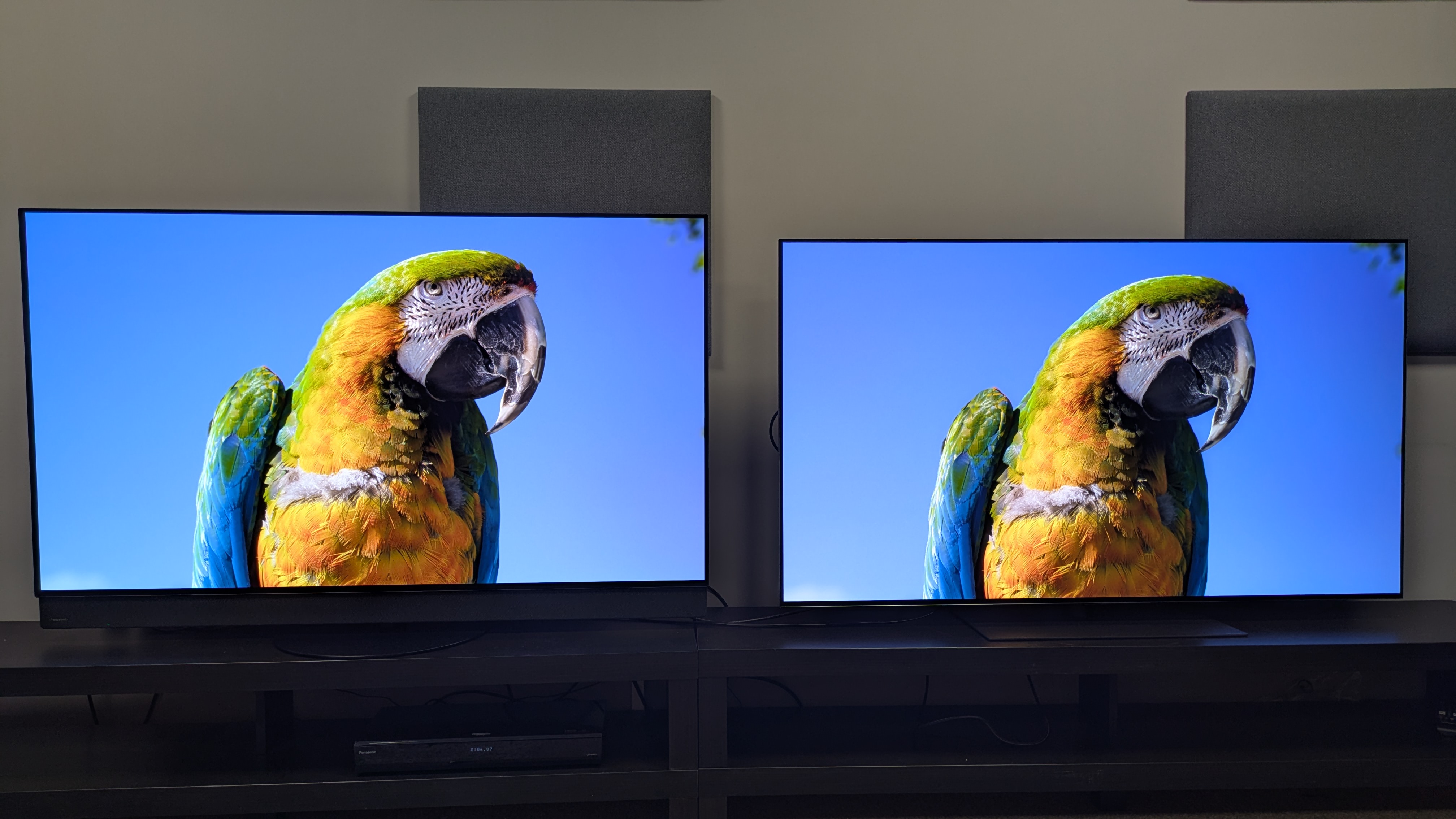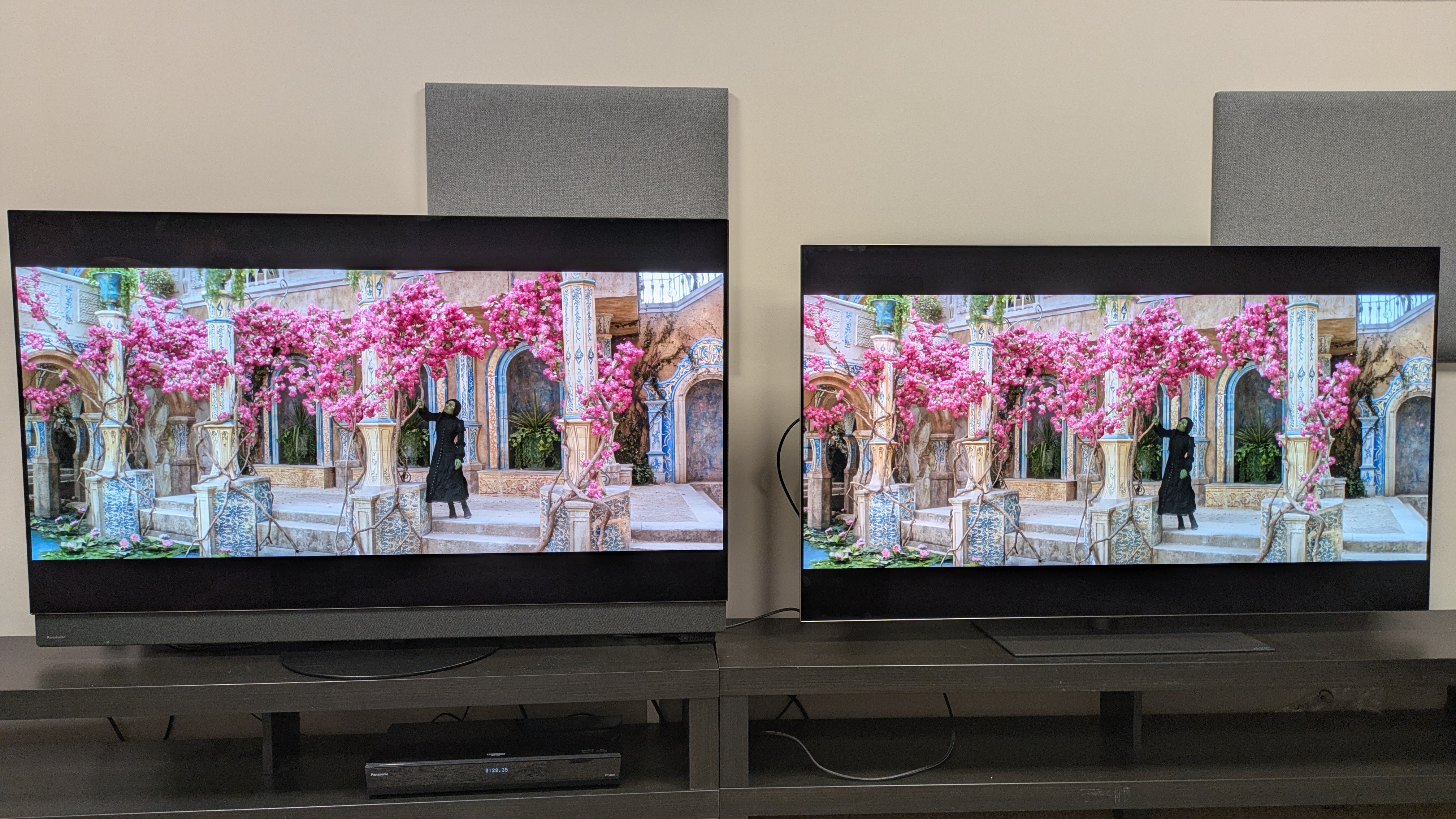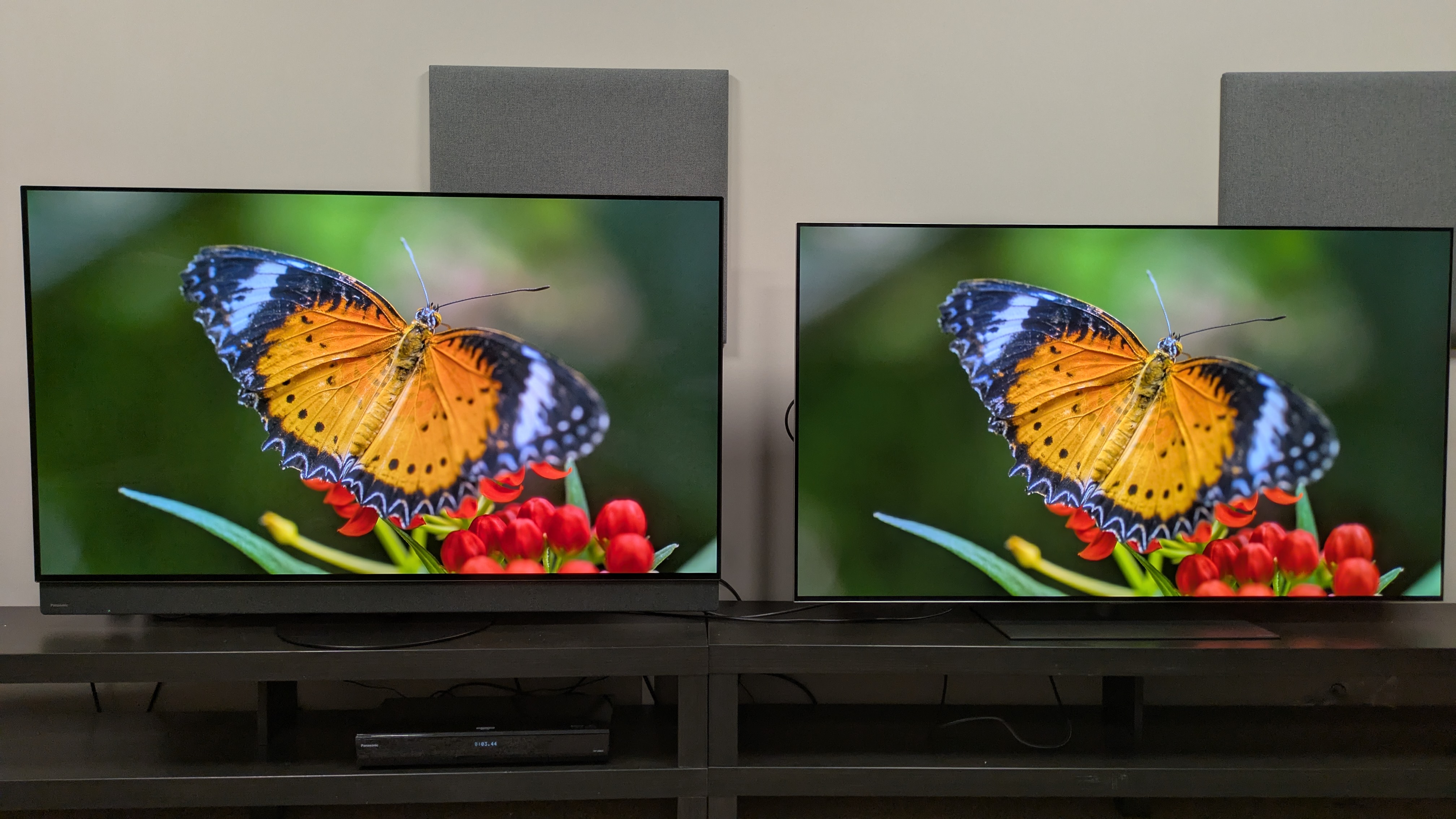I tested Panasonic and LG flagship OLED TVs side-by-side, and even though they use the same panel, the results were surprising
The same panel, different results

LG and Panasonic are just two of the top brands in the OLED TV market, but unlike rivals such as Samsung, Sony and Philips, their TVs often share a lot in common, right down to using the same OLED display panels.
The LG G4 and Panasonic Z95A, two of the best OLED TVs launched in 2024, both used micro-lens-array (MLA) OLED panels manufactured by LG. In 2025, it’s a similar story as the LG G5 and Panasonic Z95B both use LG’s new Primary Tandem RGB OLED panel (also known as four-stack OLED).
That means you should expect a similar picture from both, right?
As I’ve discovered when testing combinations of some of the best TVs, models that use the same display panel don’t always look the same. For example, the Samsung S95F and Sony Bravia 8 II flagship OLED TVs use Samsung’s QD-OLED panels, but when I tested them side by side, I got very different results.
The LG G5 and Panasonic Z95B were featured in our recent OLED four-way showdown with a casual judging panel, with the aforementioned S95F and Bravia 8 II rounding out the group, but I thought it would be illuminating to compare the LG and Panasonic on their own.
Brightness


With both the Z95B and G5's default Filmmaker Mode settings active, it was clear that the G5 had a huge brightness advantage – an odd result considering both use the same OLED panel. When viewing some demo footage from the Spears & Munsil UHD Benchmark 4K Blu-ray in HDR10 format, scenes with snow looked far brighter and more vibrant on the G5, with much more brilliant whites and highlights. The Z95B’s picture still looked very accurate, but dim in comparison.
Leaving both sets in Filmmaker Mode, I measured the Z95B’s peak HDR brightness on a 10% white window pattern at 1,028 nits, a significantly lower result than the G5’s 2,268 nits on the same pattern.
Sign up for breaking news, reviews, opinion, top tech deals, and more.
After a quick check of the Z95B’s picture settings, I found its Luminance Level (brightness) was set to 70/100 by default, while the G5’s was set to 100/100. After upping the Z95B’s brightness to 100, it hit 2,355 nits, making it the brightest OLED I’d measured to date on this test.
Going back to the same Spears & Munsil footage with the brightness on the Z95B set to 100, the snow scenes now showed much more dazzling whites. It looked very similar to the G5, with the only real difference being the color temperature. I did, however, feel that despite the boost in brightness, the Z95B lost a little of the picture accuracy I’d noted previously.
Color and contrast

Both the Z95B and G5 had superb color in my comparison. Watching more Spears & Munsil footage in HDR10 format, a parrot’s yellow and green feathers looked vivid on both TVs, and a field of red flowers was crisp and refined, with plenty of punch. Once again, the G5’s brightness in default settings gave colors more pop, but upping the Z95B’s brightness brought it to a similar level of vibrancy. The Z95B demonstrated richer, deeper colors, though, thanks to its stronger contrast and more refined black levels.
Switching to Wicked on 4K Blu-ray in Dolby Vision, the default brightness settings were 100/100 in both the Dolby Vision Dark mode on the Z95B and Dolby Vision Filmmaker Mode on the G5. This made the colors on both TVs look very similar. Elphaba’s green skin and the pink flowers and blue details on a wall in the Wizard & I scene both had the same eye-popping, vibrant color, and they also looked true-to-life.
Where the TVs differed was that the Z95B's deeper black levels made colors appear bolder and more detailed, whereas they looked brighter and punchier on the G5. This was easy to see in Glinda’s pink outfits and the greens of the Emerald City in Wicked.

As you’d expect from two top-tier OLED TVs, both black levels and contrast are excellent. Watching Alien: Romulus in Dolby Vision on 4K Blu-ray, shots of space or dark tunnels within the ship showcased rich black levels on both TVs, with excellent contrast between dark shadows and bright highlights from stars, lights and torches. The Z95B had the edge of the two TVs here with its deeper blacks, but again, both looked great.
Switching to The Batman in Dolby Vision on 4K Blu-ray, I used the opening crime scene section I regularly use for testing contrast. For this movie, I had to view in dimmed or pitch black conditions as both the Z95B and G5 struggled with the overhead lighting in our testing lab.
Interestingly, although both showcased excellent black levels and contrast, with the torches carried by detectives balancing well against the dim surroundings, I noticed that in pitch black conditions, black levels were more elevated on the G5. The Z95B’s deeper blacks resulted in stronger contrast, although there was some loss of shadow detail, specifically Batman’s eye and the logo on his chest when he looked towards the camera. Of the two, I found myself drawn to the Z95B as it felt more accurate to the movie.
Bang for your buck

It’s fair to say that in recent years, a drawback of Panasonic’s flagship OLED TVs has been their price, which is often hundreds more than that of its main rivals at launch. This year, however, Panasonic is being more aggressive with its pricing. The 55-inch Z95B is available for $2,399 / £2,299, while the 55-inch G5 is available for $2,199 / £2,299. The 65-inch Z95B, meanwhile, is available for $3,099 / £2799, while the 65-inch G5 is $2,899 / £2.899.
One thing that could swing things in the Z95B’s favor between these two TVs is sound. Panasonic’s TVs are always among the best TVs for sound, and the Z95B is no different.
Watching the Batmobile chase scene from The Batman, the Z95B stood head and shoulders above the G5 when it came to the built-in sound. The Z95B’s punchier sound and much more powerful bass better captured the rumble of the Batmobile’s engine and the crunching of car impacts and explosions. Speech was clear on both sets, but the Z95B delivered better clarity. With the Z95B, you can easily watch without using one of the best soundbars – a factor that saves you money – whereas a soundbar is more recommended with the G5.
Where the G5 has the edge is in its gaming features, which are up there with the best gaming TVs and include 4K 165Hz support on four HDMI 2.1 ports. The LG’s webOS 25 smart TV interface is also one of the best I’ve used and provides a superior overall experience to the Z95B’s Fire TV smart interface.
Both of these are class-leading OLED TVs, and both are in the conversation for TV of the year. But based on this comparison, I found myself favoring the Panasonic Z95B. Its default Filmmaker Mode brightness setting may be odd, but once adjusted, I found myself more drawn to its picture than the LG G5's picture.
You might also like
- I tested LG, Samsung and Sony's elite 2025 OLED TVs side-by-side – here's the one I'd buy with my own money
- I tested the Samsung S95F and LG G5 OLED TVs side-by-side: here's which one you should get
- I tested Samsung and LG's cheapest OLED TVs side-by-side to see which TV comes out on top – here's what happened

James is the TV Hardware Staff Writer at TechRadar. Before joining the team, he worked at a major UK based AV retailer selling TV and audio equipment, where he was either telling customers the difference between OLED and QLED or being wowed by watching a PS5 run on the LG 65G2. When not writing about the latest TV tech, James can be found gaming, reading, watching rugby or coming up with another idea for a novel.
You must confirm your public display name before commenting
Please logout and then login again, you will then be prompted to enter your display name.